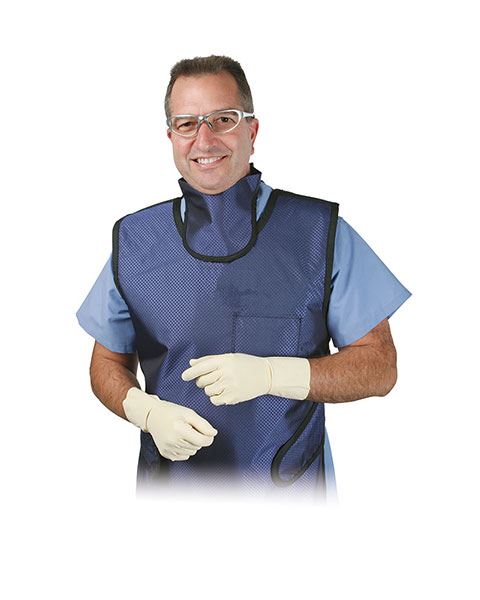-
Home
-
Adoption of Eye Protection from Radiation Gaining Steam
Adoption of Eye Protection from Radiation Gaining Steam
January 20, 2020

Your eyes are two of your body’s most valuable and sensitive organs, yet, when working with radiation, it’s still not standard practice to protect the eyes as well as current technology allows.
While attention to eye safety and the use of leaded eyewear are starting to come to the forefront of medical thinking, improvements can still be made to better protect your eyes from lasting damage.
Risks Associated with Radiation Exposure Involving the Eyes
When your eyes are exposed to even low doses of radiation, conditions like vision loss and cataracts can result. As exposure gets higher, so do the consequences – iris damage, conjunctiva, sclera, retinal damage, tumor growth, glaucoma and more can result from inattention to proper protection.
The lens of the eye is one of the most radiosensitive tissues humans have1, and, though medical professionals are developing a thorough understanding of the aforementioned risks, a lack of reliable values for harmful eye doses has persisted.
In fact, though the International Commission of Radiological Protection (ICRP) has accepted a threshold of 0.5 Gy, values ranging well below that threshold could contribute to cataract formation and other injuries2. Furthermore, the ICRP now recommends a dose limit for the lens of the eye of 20mSv in a year averaged over a five-year period, with no single year eclipsing 50 mSv.
Lowering Your Risk with Adequate Protection
Medical professionals and interventional radiologists at risk for radiation exposure should be aware of several factors that can help reduce eye doses, including:
- Optimal position of the X-ray tube under the patient table
- Use of ceiling-mounted screens during all procedures, regardless of scope
- Consistent use of appropriately fitting lead eyewear for protection
That final risk-avoidance strategy is one of the easiest to implement – lead glasses should be worn any time medical professionals are employing lead protection elsewhere on their body, and the use of such eyewear can reduce lens-dose rate by a factor of five to 10 even without the aid of other preventative measures2.
Combining lead eyewear with scatter-shielding screens can be even more effective, reducing dose rate by a factor of five to 252.
Staff doses can be significant, even for staff members not directly involved in the procedure, so making the use of protective eyewear a priority and a best practice should be high atop the list of medical professionals.
At AliMed, we offer a variety of stylish and protective lead eyewear options from well-known brands like Nike, Oakley, Rudy Project and Costa. All our eyewear is designed to help protect your eyes without the imposition of heavy, awkward pairs of glasses, meaning the days of bulky, unattractive solutions to eye protection are over.
All AliMed eyewear is designed with ALARA (As Low As Reasonably Achievable) protocol in mind and meets the recommended 0.75 mm Pb-equivalent protection for front lenses and 0.5 mm Pb-equivalent protection from additional peripheral lenses on some options.
To learn more about AliMed’s protective eyewear offerings, visit Radiation Protection Glasses
Resources:
- https://www.uptodate.com/contents/radiation-risk-to-healthcare-workers-from-diagnostic-and-interventional-imaging-procedures
- https://www.iaea.org/resources/rpop/health-professionals/radiology/cataract/staff#7